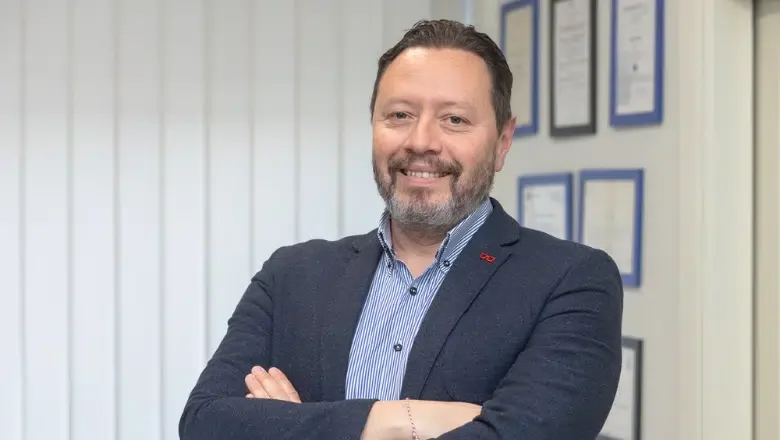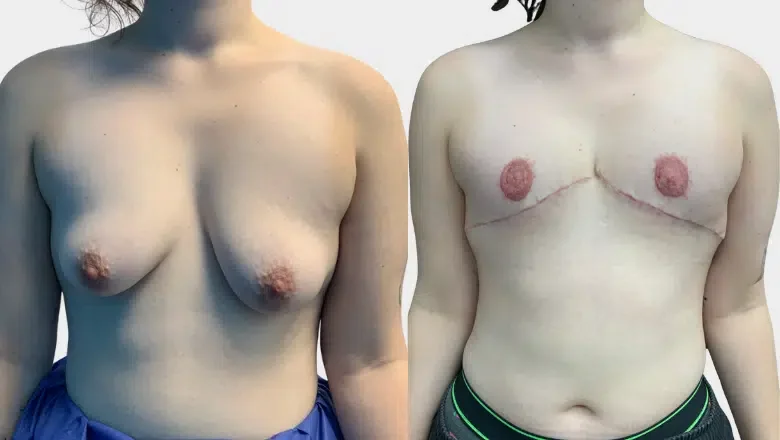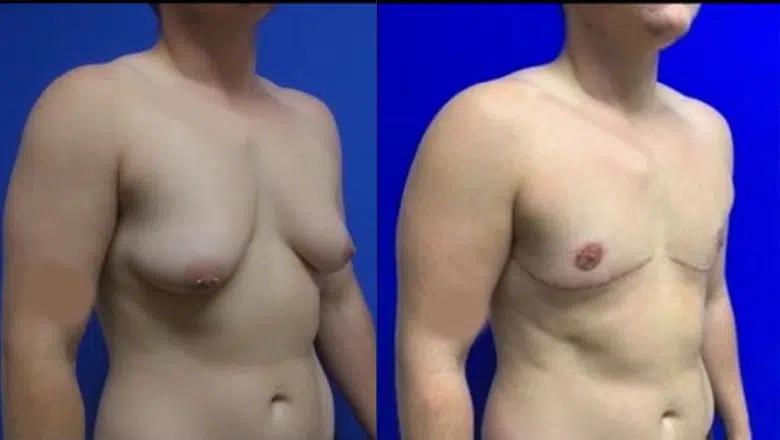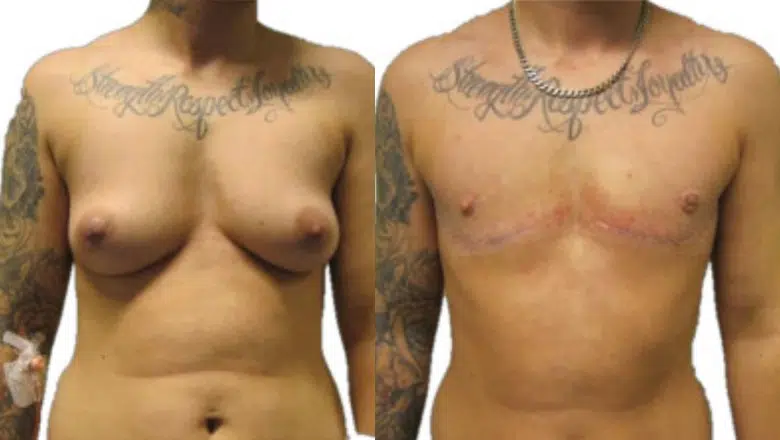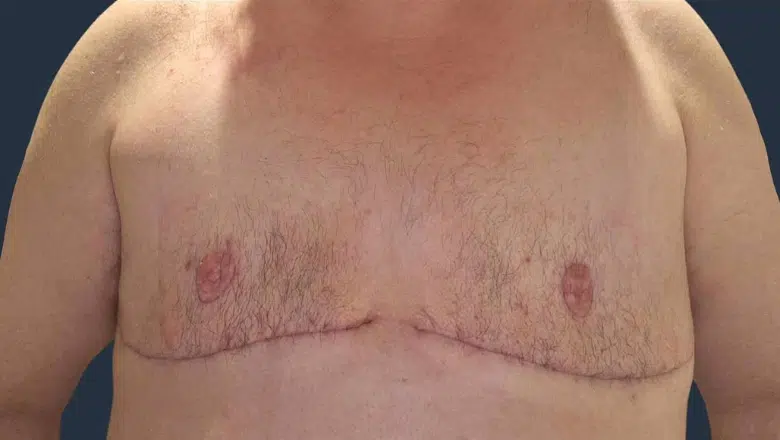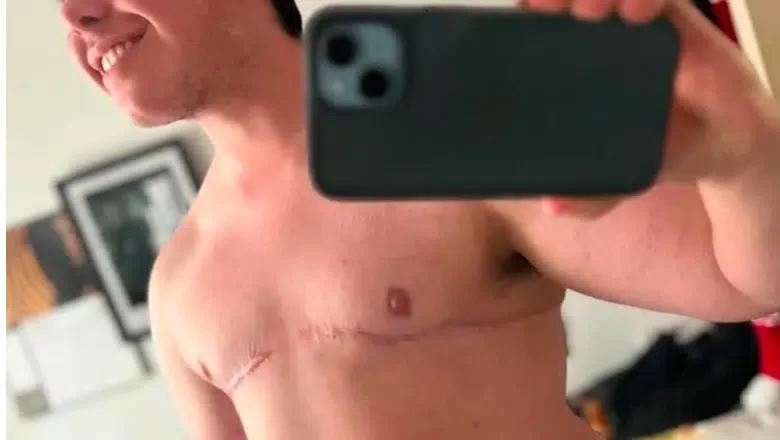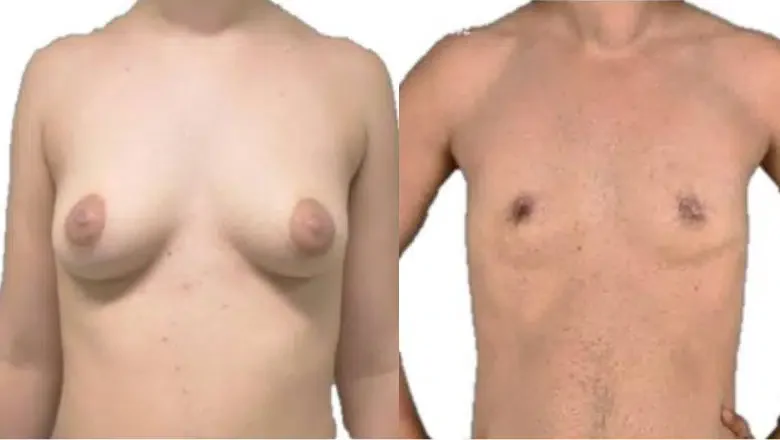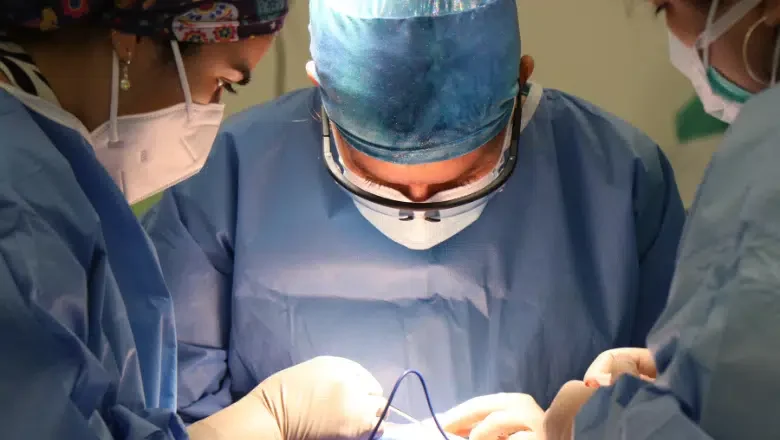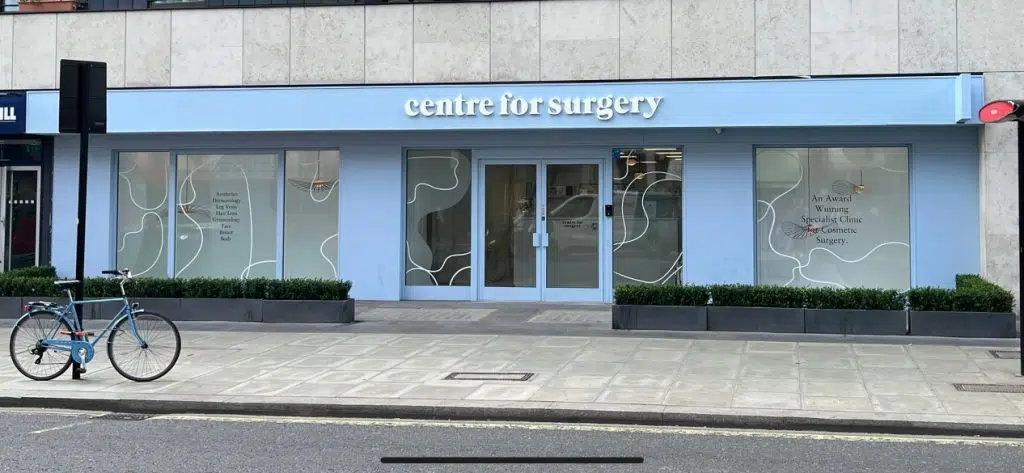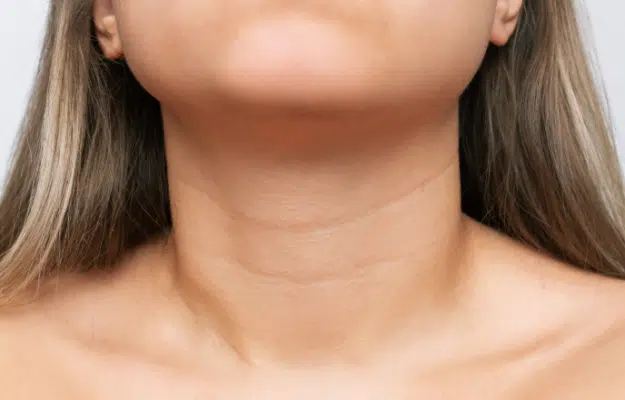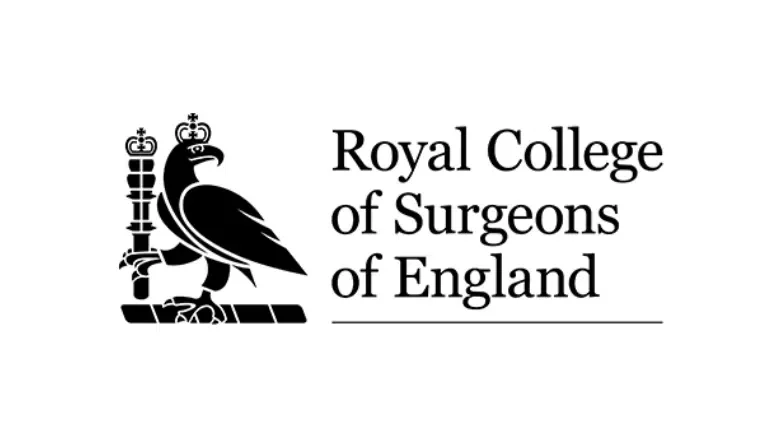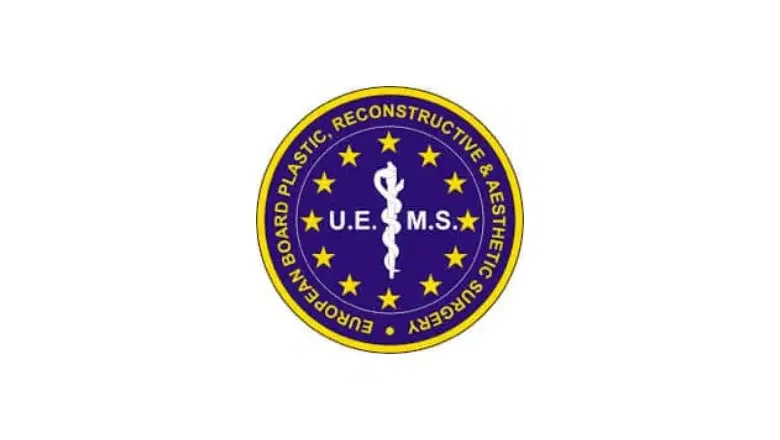FTM/N Top Surgery in London
Embrace your true self and feel confident in your own body with FTM top surgery – a transformative procedure tailored to your individual needs and goals.
Female-to-male top surgery, or FTM Surgery, is aimed at transgender men who want to achieve a more masculine-looking chest that appears flatter and contoured. FTM top surgery is also known as female-to-male chest reconstruction surgery or masculinising chest surgery. Other terms that may be used to refer to this surgery include gender-affirming chest surgery, chest masculinisation surgery, and gender-confirming chest surgery. There are several types of FTM top surgery. The most common gender affirmation procedure involves surgically removing breast tissue, also known as a mastectomy, and eliminating excess skin and fat. The nipple and areola complex is often repositioned to achieve a more natural look. Many trans men prefer smaller areola dimensions, which can be surgically reduced as part of an areola reduction procedure. The most appropriate type of female-to-male top surgery will depend on the existing breast size, skin elasticity, and soft tissue surrounding the breasts.
RELATED: FTM Top Surgery FAQs
Previous treatments for achieving a flatter chest often involved chest binding. This method of flattening the chest often causes skin injury and is associated with difficulty breathing due to the tightness of the binder. FTM top surgery is considered the most effective cosmetic surgery procedure for trans men wanting to achieve a flat-looking chest.
What is Female to Male FTM top Surgery for Trans Men?
Female to Male (FTM) top surgery is a surgical option available for transgender men and non-binary individuals who wish to achieve a more masculine chest. The procedure involves removing the breast tissue and reconstructing the surrounding tissue to create a more masculine appearance.
There are several techniques used in FTM/N top surgery, and the technique used in a particular case depends on the size of the breasts before surgery. For individuals with larger breast tissue, a total bilateral mastectomy is performed, often referred to as double-incision top surgery with or without nipple grafts. This approach involves creating a larger incision, removing the breast tissue, and altering the size of the nipple and areola. The surgeon may also remove excess fat and skin to create a smooth and tight masculine chest.
For those with smaller breasts, a periareolar approach may be used. This approach involves making an incision around the sides of the areola, removing the breast tissue, and suturing the incision to create a smaller chest with smooth skin. In cases where the individual already has a small chest, a small incision may be made along the lower border of the areola, through which the surgeon removes breast tissue and performs liposuction if necessary.
FTM top surgery is much more than just removing the breast tissue. The surgery involves a careful reconstruction of the entire chest to create a more masculine appearance. The size of the breasts will determine the technique used before surgery. Ensure that you discuss the options with a qualified surgeon to determine which technique is best suited for achieving the desired results.
Dr Spiros Vlachos – Specialist in FTM Top Surgery
Dr Spiros Vlachos is a highly experienced specialist in FTM top surgery, offering all types of masculinising chest surgery to help individuals achieve their desired results with natural, aesthetic outcomes. His expertise includes double incision mastectomy with free nipple grafting, nipple-sparing techniques, periareolar mastectomy, and inverted-T top surgery, allowing for tailored procedures based on each patient’s unique needs and anatomy.
With a meticulous approach and a deep understanding of gender-affirming surgery, Dr Vlachos ensures that every procedure prioritises safety, precision, and patient satisfaction.
FTM/N Top Surgery Before & After Photos
Double Incision Mastectomy
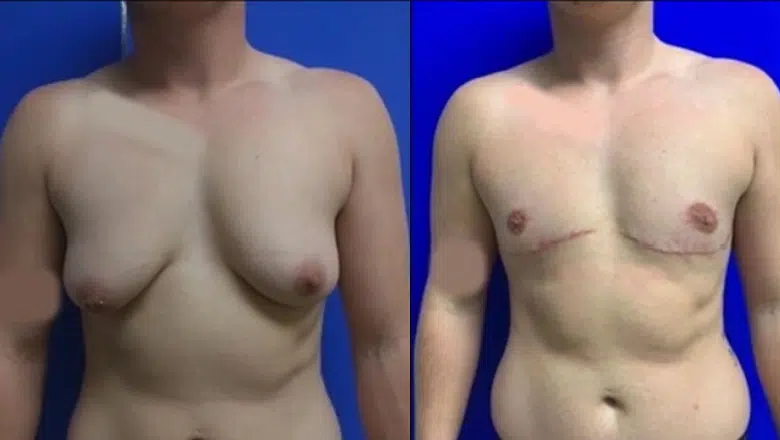
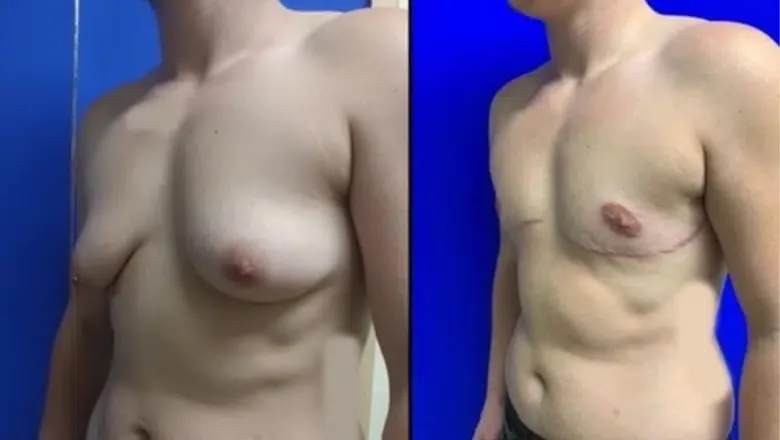
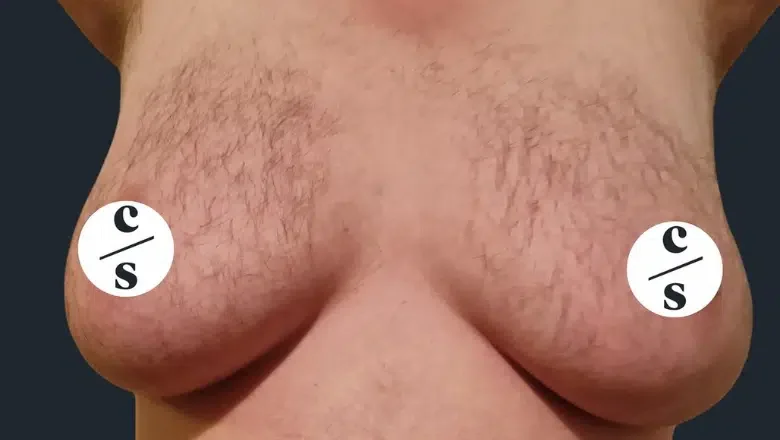
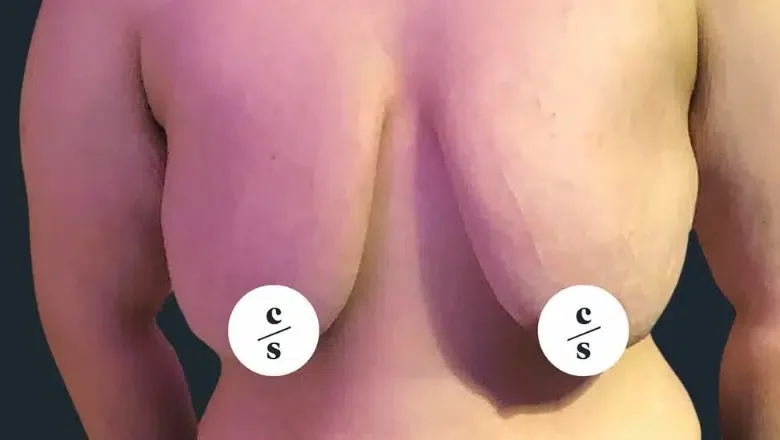
Keyhole Top Surgery
Benefits of FTM/N Top Surgery
Female-to-male top surgery is increasingly requested by trans men who want to achieve a masculine-looking chest with natural contours. FTM surgery is one of the best ways to treat symptoms of gender dysphoria. Gender dysphoria is linked with feelings of significant distress and is most often due to a mismatch between a person’s gender identity and biological sex.
Female-to-male gender surgery is highly effective for treating gender dysphoria. Anxiety and depression are frequently associated with this condition. FTM top surgery has been proven to lead to a significant boost in confidence and emotional well-being. This helps many trans men have an improved quality of life and a better ability to form more robust personal and professional relationships.
Am I Suitable for Female to Male Top Surgery?
FTM top surgery is ideal for trans men diagnosed with gender dysphoria, affecting their quality of life. Current guidelines recommend that trans men live in their chosen gender for at least 12 months and have completed an in-depth psychological assessment before being considered for the female-to-male top surgery.
All patients must be aged 18 or older before they can be considered for FTM top surgery. There are certain preoperative steps which patients should take to ensure they are optimally prepared for surgery. Smokers should stop at least four weeks before surgery. Any significant medical conditions, including hypertension and diabetes, should be well-controlled.
Being significantly overweight increases the risks of surgery, and we advise that your body mass index be 25 or below. Your surgeon must also be fully assured that you are in the best possible mental condition before FTM surgery. As with any surgical procedure, it is essential to have realistic expectations of what female-to-male gender surgery can achieve.
FTM Top Surgery Procedure
FTM top surgery involves several different surgical techniques to create a more masculine and flatter-looking chest. The most appropriate surgical method used will vary based on the existing size of the breasts, the size of the nipples and areola, and the amount of skin laxity present. Those who have lost significant weight may experience more pronounced skin laxity, which may require a more invasive procedure. Female-to-male top surgery is most commonly performed under general anaesthetic, and the procedure takes approximately three hours to carry out. FTM top surgery is an outpatient procedure, which means you can go home later the same day once you have recovered from the anaesthetic effects.
Double incision top surgery with free nipple grafting
Double incision top surgery is the most commonly performed type of FTM top surgery. The procedure involves surgical removal of the nipples and areola and reducing their size if required. Incisions will then be made to remove breast tissue as part of a mastectomy procedure. Liposuction is then used to remove excess fat. Excess skin over the breasts is also removed to tighten and flatten the chest. Your surgeon will reconstruct the chest and minimise the appearance of indentations or puckering with the meticulous surgical technique. The detached nipple and areola complex are then repositioned in the new location on the flat chest. A nipple-sparing double incision mastectomy could be a suitable option for selected candidates.
Periareolar top surgery
Periareolar top surgery is ideal for trans men with smaller chests. The procedure involves a circumferential incision around the margins of the areola. A second incision is then made around the first incision. Any breast tissue is surgically removed, with liposuction performed to remove excess fat. The two edges of the skin are then stitched back together, which helps to create smaller-looking areolas.
In some cases, your surgeon may recommend inverted T-top surgery, especially if you have a larger chest with extra skin. The incision for this procedure involves making an anchor-shaped incision, which does not affect the nipple and areola. This procedure preserves nipple sensitivity, although an extra vertical incision will be required as part of the technique. This technique is often preferred by trans men who want to maintain nipple sensation, and the risk of nipple loss is minimised. A drawback of the procedure is that some residual tissue must be preserved to ensure adequate blood supply to the nipple. This means the surgeon may be unable to completely flatten the chest compared with double incision periareolar top surgery.
Keyhole top surgery
Keyhole top surgery is ideal for trans men with smaller chests and tighter skin. The procedure involves making a small incision at the lower margin of the areola. The areola remains attached to the underlying breast tissue. Breast tissue is then carefully removed. Liposuction may be performed to remove excess fat. As with other types of FTM surgery, the areola size can be surgically reduced if necessary. This procedure helps to preserve nipple sensitivity with the added benefit of achieving a good level of chest flatness.
Recovery after FTM/N Top Surgery
After surgery, it is normal to feel mild to moderate discomfort and stiffness. Any discomfort is most commonly felt during the first few days after FTM surgery. You will be prescribed painkillers by your surgeon to help keep you comfortable throughout your recovery.
RELATED: Recovery after FTM Top Surgery – Top Tips after Breast Removal Surgery
Most patients can return to work approximately two weeks after surgery, although this depends on the type of surgical technique used as well as your overall state of health. Strenuous activity must be avoided for six weeks after surgery. Most pain and swelling will resolve over the first few weeks after surgery. We recommend sleeping on your back for at least two weeks to avoid putting pressure on your chest. Your surgeon will provide customised recommendations for minimising scarring after FTM top surgery.
If you fail to follow your surgeon’s instructions in full, you may increase the risk of developing unsightly scarring after surgery. As part of the surgery, your surgeon may insert wound drains to prevent the formation of seroma or hematoma. These will be removed approximately 3 to 4 weeks after your procedure.
Aftercare for FTM Top Surgery
Recovery after FTM top surgery takes time and patience, and proper aftercare is essential to ensure a smooth healing process. Here are some aftercare tips to follow:
Use Compression Bandages
Compression bandages are essential for preventing fluid accumulation and supporting the chest area during the healing process. It’s crucial to wear them as the surgeon instructs to ensure optimal results.
Take Medications on Time
To manage pain and reduce swelling and bruising, it’s essential to take pain medication as prescribed by the surgeon. Missing doses can affect the healing process, so following the medication schedule closely is essential.
Avoid Pressure on the Chest
During the healing process, it’s essential to avoid putting any pressure on the chest area. Wearing loose clothes and avoiding strenuous activities, such as yoga or exercise, can help reduce discomfort and ensure proper healing.
Sleep on Your Back
It’s essential to sleep on your back during the healing process to avoid putting pressure on the chest area. Elevating the upper body with pillows can help reduce swelling and promote proper healing.
Stay Hydrated and Rest
Staying hydrated and getting enough rest is crucial to ensure proper healing after FTM top surgery. Drinking fluids and avoiding alcohol and smoking can help speed up the healing process.
Attend Follow-Up Appointments
Attending all follow-up appointments with the surgeon is crucial for monitoring the healing process and promptly addressing any concerns or complications that may arise.
Potential Risks of FTM Top Surgery
As with any surgery, there are certain risks involved with FTM top surgery. When performed by an experienced plastic surgeon, the risks of surgery are considered minimal. Your surgeon will discuss the potential risks and complications associated with FTM surgery at your consultation, which may include:
- Bleeding and haematoma formation – a blood collection beneath the skin at the surgery site.
- Seroma – straw-coloured fluid collecting at the site of surgery.
- Wound infection.
- Nipple necrosis or death of the nipple
- Loss of nipple grafts.
- Altered skin sensation.
- Altered nipple sensitivity.
- Anaesthetic risks, including anaphylaxis
- Deep vein thrombosis and pulmonary embolism
FTM Top Surgery Cost London – How much is Transgender Top Surgery in London? Price & Fees
Every patient is unique, and the cost of FTM top surgery in London varies depending on the surgical technique employed. Double incision top surgery with free nipple grafting will cost more than keyhole top surgery. Once you have consulted with your surgeon, you will receive a comprehensive quotation from your dedicated patient coordinator. FTM top surgery cost includes your surgeon’s fee, anaesthetist’s fee and facility fee. Postoperative checkups are included as part of the surgical package.
RELATED: How Much Does MTF & FTM Top Surgery Cost In London?
Why Choose Centre for Surgery for FTM Top Surgery?
If you’re seeking FTM top surgery, choosing a reputable and experienced provider is crucial. At Centre for Surgery, you can trust that you’re in good hands. With over 40 years of combined experience and thousands of satisfied patients, our team of plastic surgeons is considered one of the leading experts in gender surgery in the UK. We specialise in FTM top surgery, and our surgeons have performed numerous successful procedures, delivering high-quality results.
RELATED: Transgender Surgery FAQs – What to Consider Before Getting Top Surgery
In addition to our experience and expertise, we are committed to providing personalised treatment plans tailored to your unique needs and goals. Our state-of-the-art facilities are equipped with the latest technology and equipment, allowing us to perform procedures with the highest level of precision and accuracy. We also offer comprehensive care throughout the entire treatment process, from the initial consultation to post-operative follow-up care, to ensure that you have a positive and successful experience. With a patient-centred approach to care and a track record of positive patient reviews, Centre for Surgery is a trusted and reputable provider of FTM top surgery.
FAQs
-
What are the benefits of FTM surgery?Female to male surgery is the ideal procedure for treating gender dysphoria to help trans men live happily in their chosen gender. Most people who have FTM top surgery often tell us how they have developed a significant boost in self-confidence once final results have appeared within three months. The procedure helps trans men to develop a better connection with their bodies and, by doing so, appreciate their preferred gender identity. Many mental health conditions, including anxiety and depression, can be effectively relieved with surgery. Trans men often develop confidence in socialising and achieve success in their professional careers, and with more confidence in dating people.
If you want to achieve a more masculine chest profile, FTM top surgery can help eliminate female breasts. Centre for Surgery is renowned as an expert clinic for gender surgery, and our surgeons are ideally placed to assist you in your journey to living happier lives in your preferred gender. -
Can I get transgender chest surgery on the NHS?Although it is possible to get FTM top surgery on the NHS if you meet all the criteria for treatment, NHS waiting lists are getting longer with each year. This makes the possibility of getting treatment for female to male gender reassignment virtually impossible.
Choosing Centre for Surgery to carry out your FTM top surgery means you can have treatment promptly and without the stress and anxiety of long waiting lists. -
Am I suitable for FTM Top Surgery?Female To Male (FTM) top surgery is a major surgical procedure, and not all patients who want to undergo the procedure are suitable candidates. Before scheduling the procedure, it's essential to ensure that the candidate's body is in good health and ready for surgery. Here are some factors that determine whether a candidate is a suitable candidate for FTM top surgery:
Psychological Evaluation: A psychological evaluation is necessary to assess the mental health of the candidate. The evaluation will ensure that the candidate fully understands the implications of the surgery and is emotionally prepared for the procedure. A report from a qualified psychologist is often required before the surgery.
Healthy Weight: A candidate needs to have a healthy weight to undergo the surgery under general anaesthesia. Being overweight or underweight can lead to complications during the surgery and may increase the recovery time.
No Systemic Disorder: Any systemic disorder that could interfere with the surgery must be ruled out before the procedure. Candidates with conditions such as heart disease, diabetes, or autoimmune disorders may not be suitable candidates for the surgery.
Realistic Expectations: Candidates with realistic expectations are often the best candidates for the surgery. Gender-affirmation surgery is a complex process, and it's essential to understand that the procedure will not entirely change the physical appearance. While FTM top surgery will make the chest area flatter, other parts of the body will remain the same.
Non-Smoker: Smoking can have adverse effects on the healing process, and candidates are advised to quit smoking for at least a few weeks before and after the surgery.
Age and Consent: Candidates need to be at least 18 years old and capable of providing informed consent for the surgery. It's crucial to understand the risks involved and make an informed decision.
Hormone Therapy: Candidates may need to undergo hormone therapy before undergoing FTM top surgery. The hormone therapy is usually for a period of 10-12 months and is necessary to promote breast tissue growth before the surgery. -
Is top surgery the same as mastectomy?Top surgery and mastectomy are related procedures, but they are not the same thing. Both procedures involve the removal of breast tissue, but they are performed for different reasons.
Mastectomy is a surgical procedure typically used to treat breast cancer, and it involves the removal of the entire breast, including the nipple and areola. There are different types of mastectomy procedures, including total mastectomy, which involves removing the entire breast, and partial mastectomy, which involves removing only the cancerous portion of the breast. Mastectomy can also be performed as a prophylactic measure to reduce the risk of breast cancer in high-risk patients.
Top surgery, on the other hand, is a gender-affirming surgical procedure typically performed on transgender men or non-binary individuals who wish to remove their breasts to achieve a more masculine appearance. The procedure involves removing breast tissue and reshaping the chest to create a more masculine contour. Top surgery may involve the removal of the entire breast, including the nipple and areola, or it may preserve the nipple and areola while removing breast tissue. -
What type of surgeon is best for FTM top surgery?The best type of surgeon for FTM top surgery is a specialist plastic surgeon who has experience and expertise in performing gender-affirming surgeries. When selecting a surgeon, it is important to research their qualifications, experience, and patient outcomes. Look for a surgeon who has a good reputation in the field of transgender surgery, and who is willing to listen to your goals and concerns and provide personalised care. At Centre for Surgery, we are home to the some of the top gender surgeons in the UK.
-
Is top surgery painful?It is normal to expect mild discomfort for approximately 3 to 5 days after FTM top surgery. Any discomfort can be easily controlled with over-the-counter painkillers such as paracetamol. It is normal to experience swelling of the chest and stiffness; these symptoms will take 3 to 4 weeks to settle down. It is important to remember that any residual swelling may take up to 3 months to disappear after top surgery. All patients have access to our experienced nursing team for any questions or concerns they may have about their healing and recovery.
-
What scars can I expect after transgender chest surgery?It is normal to have scars after any type of surgery as incisions are being made. Scars from a properly made incision most commonly appear as a thin, slightly raised line above the skin. With time the scar will flatten and become a pale white colour. The nature of the scars following FTM top surgery depends on the type of surgical method used to flatten the chest. The Perry areola and keyhole top methods are less invasive than double incision top surgery. These methods, therefore, result in less obvious scarring.
Fortunately, most scars will eventually fade over time, but how long this takes will differ between people. Your surgeon may recommend you use bio oil to massage the scars to improve their appearance. Certain activities should be avoided in the postoperative period, including tanning beds, smoking and traumatising the surgical sites by scratching or rubbing them. These adverse factors may result in scars appearing excessively prominent.
Keloid scars sometimes occur in certain people. Keloid scarring is much thicker than most common types of scars. They are often highly visible and seen as a cosmetic nuisance, although they may cause symptoms, including pain, particularly if they rub on clothing items. Wound infections sometimes result in excessive scarring and will require a longer period of time for them to flatten. Centre for Surgery is well known for its expertise in scar management and have access to the full range of treatments for improving the appearance of surgical scars. -
When can I see the final results of FTM top surgery?Once post-operative swelling begins to settle down, you'll begin to see the final results of surgery. FTM top surgery is designed to produce a flatter, more masculine-looking chest with defined contours. Scarring is inevitable with any type of surgical procedure, including top surgery. The minimally invasive methods of top surgery, including keyhole top surgery, involve less scarring than double incision top surgery. Some patients may notice they have a change in nipple sensitivity or a complete loss of sensitivity depending on the type of surgical method used to achieve a flatter chest profile.
Once full recovery has occurred from transgender chest surgery, trans men can begin to enjoy the procedure's benefits. Symptoms of gender dysphoria are effectively alleviated, allowing Trans men to feel better connected with their new preferred gender identity. A boost of self-confidence and emotional well-being can be expected following top surgery. -
Can you reverse FTM top surgery?In some cases, it may be possible to reverse FTM top surgery, but the process can be complex and may require additional surgeries. The specific procedure required to reverse FTM top surgery will depend on the individual patient's anatomy and the specific surgical technique that was used during the initial procedure. For example, if a mastectomy was performed during the initial surgery, a revision procedure may involve breast reconstruction to restore breast tissue. It is important to carefully consider the decision to undergo FTM top surgery and to discuss the potential risks and benefits with a qualified plastic surgeon at Centre for Surgery before proceeding with the procedure.
-
Can I breastfeed after TOP surgery?FTM (female-to-male) top surgery involves the removal of breast tissue, and it can impact a person's ability to breastfeed in the future. While it is possible to preserve nipple sensation during FTM top surgery, the surgery may also remove milk ducts, which can make breastfeeding difficult or impossible. The amount of breast tissue that is removed during surgery, as well as the surgical technique used, can also impact a person's ability to breastfeed.
If you are considering FTM top surgery and wish to preserve the ability to breastfeed in the future, it is important to discuss this with your surgeon during the consultation phase. They can provide you with information about the surgical techniques that may be used to help preserve the milk ducts and preserve nipple sensation.
If you have already had FTM top surgery and wish to breastfeed, there may still be options available to you. It is possible to induce lactation even if you do not have breast tissue, through the use of medications and/or a breast pump. However, this process can be difficult and may not be successful in all cases.
What To Expect
Consultation
Trans men who are considering having FTM top surgery will first need to have a consultation with an expert plastic surgeon to determine suitability for top surgery. The consultation will involve a detailed discussion about your needs and desires and whether your expectations are considered realistic.
Your surgeon will discuss the risks and complications of surgery and how these are minimised. Your surgeon will also take a detailed medical history, including any previous operations you may have had and what medications you are currently taking, including herbal supplements. This information will be used to determine your fitness for top surgery.
Once your surgeon decides you are appropriate for top surgery, we would recommend you reflect on all aspects of the procedure during a two-week cooling-off period. If you have any questions about any aspect of the procedure, please feel free to reach out to us to book a follow-up consultation so that you can make an informed decision about transgender chest surgery.
Before your procedure
Once your surgery has been booked, you will be assessed by a preoperative nursing team member to ensure you are in the best possible condition for FTM top surgery. We would recommend you stop smoking at least four weeks before surgery as smoking is associated with a higher risk of postoperative complications, including wound infection. You should also avoid taking aspirin or any medicines that contain aspirin to reduce the risk of postoperative bleeding. All patients having a general anaesthetic will be required to fast for six hours prior to the procedure for food and up to 2 hours before the procedure for clear fluids. Clear fluids include still water and black tea or coffee.
Surgery day
All FTM top surgery occurs at our state-of-the-art Baker Street clinic in Marylebone under a general anaesthetic. Once you have been placed under anaesthesia, the surgeon will make perform a mastectomy using one of three surgical techniques. Double incision top surgery with free nipple grafting, periareolar top surgery or keyhole top surgery. The exact technique used will depend on your expectations for treatment and will be determined at your consultation. Top surgery takes approximately three hours to perform, and once the procedure is finished, you will recover in our day ward. Once you are medically fit for discharge, a Family member or friend will need to take you home and look after you for the first 24 hours after top surgery.
After your procedure
You will need to follow all preoperative instructions given to you by your surgeon to ensure you get optimal healing after FTM top surgery. If you do not follow the instructions as recommended, the risk of complications occurring is significantly increased.
We would recommend taking two weeks off work after top surgery to allow you time to rest and heal properly. You should avoid any strenuous exercise, including going to the gym and sports for six weeks after surgery. After surgery, a compression garment will be applied to your chest to maintain its new flattened contour. Most patients feel they have completed full recovery by six weeks after surgery. As with any type of procedure Centre for Surgery, you will have access to our expert nursing team at any time if you have any questions or concerns about your healing and recovery.


